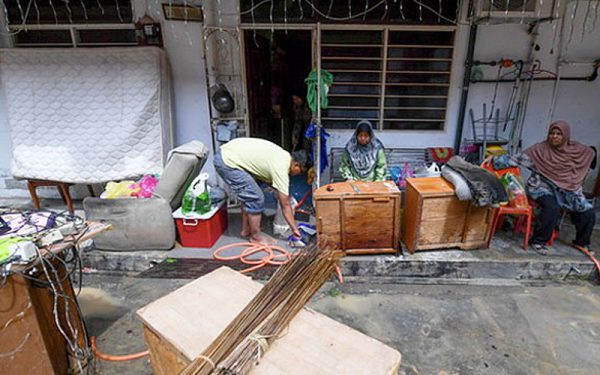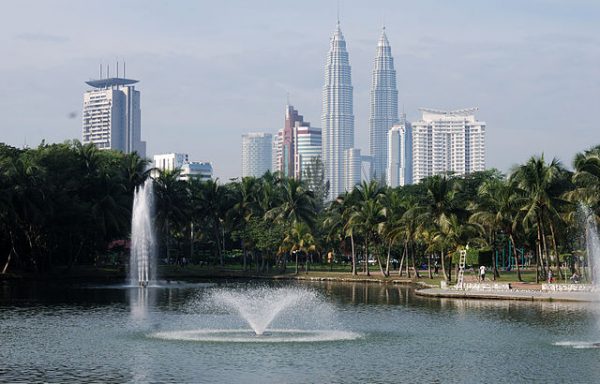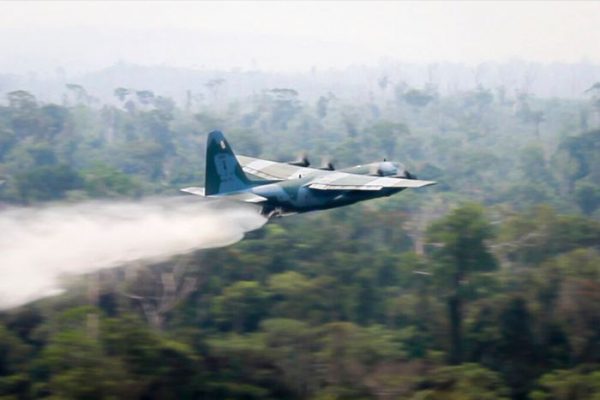Brazil warplanes dump water on Amazon as forest continues to burn
Brazilian warplanes are dumping water on the burning forest in the Amazon state of Rondonia, responding to a global outcry over the destruction of the world’s largest tropical rain forest. As of Sunday, President Jair Bolsonaro had authorized military operations in seven states to combat raging fires in the Amazon. Near the state capital of Porto Velho, there were areas larger than football fields that had been charred, but active fires were contained to small areas of individual trees. The response comes as leaders of countries in the Group of Seven (G7) nations currently meeting in France expressed grave concerns over the fires. Nearly 80,000 fires have been registered across Brazil through Aug. 24, the highest since at least 2013. The Amazon is the world’s largest tropical rain forest and is seen as vital to the fight against climate change because of the vast amounts of carbon dioxide that it absorbs. (NST Online)
Malaysia’s official poverty figures ‘vastly’ undercounted, says UN expert
Malaysia’s claim to having the world’s lowest national poverty rate is inaccurate, as the official figure vastly undercounts poverty, says United Nations human rights expert, Philip Alston. The UN Special Rapporteur on extreme poverty and human rights said Malaysia uses an unduly low poverty line that does not reflect the cost of living and excludes vulnerable populations from its official figures. According to Alston, Malaysia’s official poverty rate dropped from 49% in 1970 to just 0.4% in 2016. However, the national poverty line of RM980 per household per month would see an urban family of four surviving on RM8 per person per day. “This is a tragically low line for a country on the cusp of attaining high income status, especially since a range of rigorous independent analyses have suggested a more realistic poverty rate of 16 to 20%,” Alston said. He added that undercounting has also led to under-investment in poverty reduction, and an inadequate social safety net that does not meet the people’s needs. (The Star Online)

Poor families still struggle to make ends meet (Source: Free Malaysia Today)
Second bid called for Tajudin Ramli-linked Langkawi assets
Investors keen on the 136-room five-star Tanjung Rhu Resort and the 1,000 acres (404.7ha) surrounding it in Langkawi will get a second shot at the assets worth an estimated RM2 billion. The receivers and managers (R&M) have again called for expressions of interest (EOI) for the luxury resort and the land surrounding it following a failed last minute attempt by the debtor to settle the debt. Sources said the assets had received encouraging response from local and foreign investors including listed entities and well known hotel operators. (The Edge)
DPM: National Tourism Policy 2020-2030 to be implemented next year
The National Tourism Policy (DPN) 2020-2030 to determine the strategic direction of the country’s tourism will be implemented next year, said Deputy Prime Minister Dr Wan Azizah Wan Ismail. The policy now being drafted by the Tourism, Arts and Culture Ministry would serve as a guideline in planning the development of the tourism sector to optimise its potential as one of the key economic drivers of the country. Malaysia recorded a 6.8% growth in tourism revenue to RM41.69 billion in 1H19. 2020 is set to be Visit Malaysia Year (VM2020) which aims to see the arrival of 30 million international tourists with RM100 billion worth of tourism revenue. (Malay Mail)
Expert: KL Park can shelter the homeless
Opening Taman Tasik Titiwangsa and other public parks as transit shelters for the homeless has been suggested as a way to address the problem of homelessness in the city. In a paper by sustainable landscape architecture expert Associate Professor Dr Osman Mohd Tahir and his student, the initiative would provide a solid social structure to help the homeless get back on their feet while rehabilitating them at the same time. The concept was inspired by the successful implementation of such a project in Wichita, the United States. The paper suggested that those seeking shelter would be required to put in the hours for the park’s general upkeep, a form of payment for the rent-free facilities provided. This would reduce a park’s maintenance expenditure, which was between 10% and 20% of its development cost. Taman Tasik Titiwangsa was picked as the location for the shelter due to its proximity to two transit centres in Jalan Pahang and Medan Tuanku. “The shelters, which are semi-permanent, would function like dorms. It should be segregated by sex and equipped with amenities, such as toilets or kitchens,” he said. (NST Online)

Taman Tasik Titiwangsa (Source: Wikipedia)





